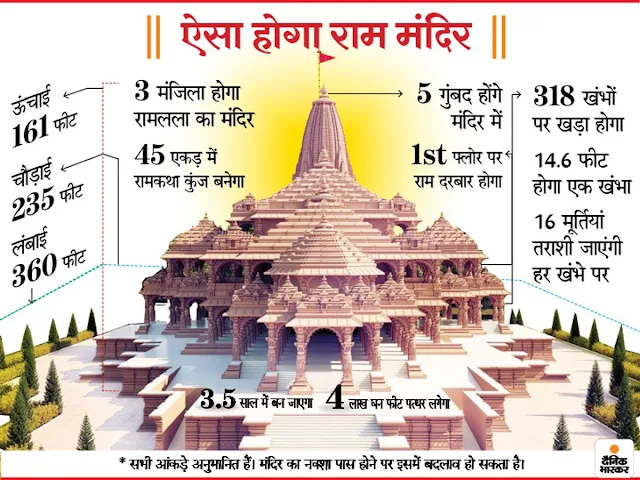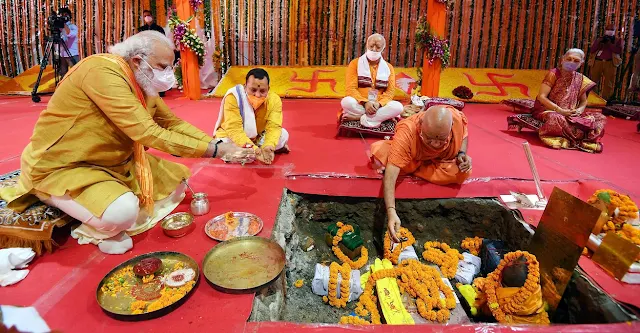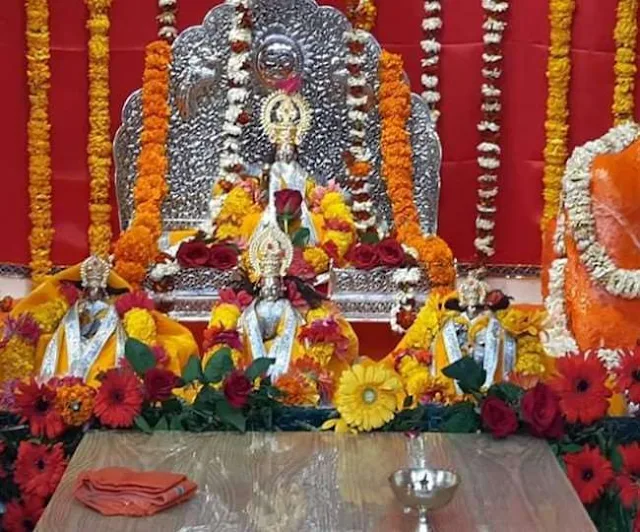Ayodhya Ram Mandir: A Symbol of Hindu Faith and Culture
Ayodhya, a small city located in the northern Indian state of Uttar Pradesh, has recently made headlines around the world for the construction of the Ayodhya Ram Mandir.
The temple, dedicated to Lord Ram, a revered Hindu deity, has been a subject of intense political and religious debate for decades.
However, the recent Bhumi Pujan ceremony marked a historic moment in the construction of the Ram Mandir and has reignited the world's interest in this important Hindu temple.
The Ayodhya Ram Mandir is more than just a place of worship for Hindus; it is a symbol of the religion's rich history and cultural heritage. Lord Ram, according to Hindu mythology, was born in Ayodhya and is considered by Hindus to be an incarnation of Lord Vishnu.
The temple, therefore, holds a special significance for millions of Hindus who see it as a symbol of their faith and culture.
The construction of the Ayodhya Ram Mandir has also been a major point of contention between Hindu and Muslim communities in India.
However, the recent Bhumi Pujan ceremony, which was attended by the Prime Minister of India and other high-ranking officials, has been seen as a step towards reconciliation and healing the divide between the two communities.
The Ayodhya Ram Mandir is expected to be a grand structure, built in the traditional Hindu architectural style, with intricate carvings and sculptures.
It is being built on the site where the Babri Masjid, a 16th-century mosque, once stood.
The demolition of the mosque in 1992 by Hindu activists sparked widespread communal riots and has been a source of tension between the two communities ever since.
In conclusion, the Ayodhya Ram Mandir is more than just a place of worship; it is a symbol of Hindu faith and culture, and a testament to the rich history and heritage of India.
The recent Bhumi Pujan ceremony has brought the temple back into the public consciousness and has reignited interest in this important Hindu temple.
Whether one views the construction of the Ayodhya Ram Mandir as a symbol of Hindu pride or as a source of conflict, it is clear that this Hindu temple in Ayodhya will continue to play a significant role in Indian politics and religion for many years to come.
Ayodhya ram mandir darshan
Once the temple is open to the public, it is expected to be open for darshan from early morning to late evening, with specific timings for different activities such as puja (worship) and aarti (ritual).
Visitors can expect to have the opportunity to perform puja, offer prayers, and receive the blessings of the deity.
It is advisable to check with the temple authorities or official websites for the most up-to-date information on darshan timings once the temple is open to the public.
Visitors are also advised to check for any restrictions or guidelines related to darshan, such as dress codes, photography restrictions, and other rules that may be in place.
Ayodhya Ram Mandir Darshan Timing
| Summer | Winter |
|---|---|
| 7:30 am to 11:30 am | 9:00 am to 11:00 am |
| 4:30 pm to 9:30 pm | 4:00 pm to 9:00 pm |





0 टिप्पणियाँ